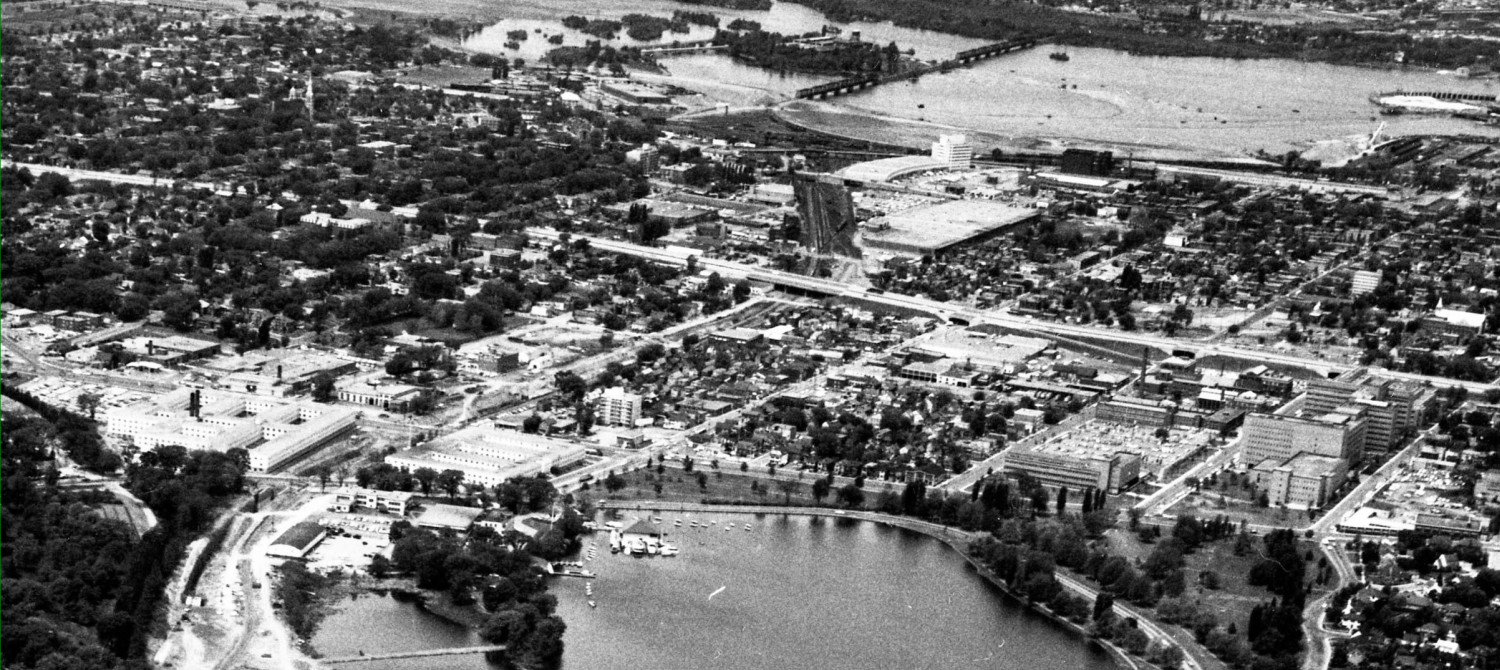Ottawans love grass. The NCC sometimes seems all about grass. Fortunately, their fetish about frustrated hayfields along the Parkways is yielding to economic pressure and the grass grows more naturally longer.
West siders can easily identify large grassy areas that seem somewhat hopeless. There’s the Centennial School playground (even when re-sodded courtesy of a developer, and watered with an irrigation system, it quickly got tramped to death), or Devonshire, or Hillson School where some locals refer to the lawn as “concrete”. Plouffe Park suffers hugely from wear and tear, and was extensively reworked recently. Will it last? Will any of these re-grassing exercises last?
Last year Bluesfest demised the very expensive lawn in front of the War Museum. That was a lawn specifically designed and constructed to permit festivals on it. But two-to-three weeks of taco hut fairgrounds, and that grass is dead. Last year, post-noisefest, the entire lawn was dug up, re-top-soiled, and re-seeded. Irrigated twice daily. And this year, after Bluesfest, it looks dead-dead again:
Last year could have been credibly blamed on drought, except the Museum field is well irrigated. And the wildgrass field to the east recovered much more quickly, even without irrigation.
Maybe its time for Bluesfest and similar festivals to be pruned to a shorter run. Or maybe we’ve got to ban those wooden decks that smother the lawn. Use dock-like raised structures that allow air and light underneath.
City Hall’s festival plaza hasn’t faired much better:
I remember when the plaza was red stonedust. It wore and looked better than this. And was a lot easier on the pocketbook.
I suspect annual reseeding and resodding isn’t exactly environmentally friendly, either. Indeed, I suspect lawns aren’t very ecologically correct in any application.
Maybe we have to get past our love affair with grass. Keep grass on the borders, or for very low usage areas (eg Dow’s Lake survives Tulipfest just fine). On suburban front lawns.
In downtown Toronto, I saw this too-brightly-green grass festival plaza:
It’s not a lawn. But it looks green, survived large crowds that would kill normal grass, and can probably be vacuumed. It was certainly practical.
If we don’t want to go the fake-grass route, maybe we will have to look more closely at big-city alternatives: more peastone or ruber-roc surfaces, more pavement.
Here’s a rubber-roc school yard already on the west side, at Ecole St Francois:
Here’s a centretown school yard, Lisgar Collegiate, well suited for the purpose to which it is put:
And in centretown, a popular dog run area in the park beside Jack Purcell Centre was converted from muddy-dead-grass to a stone surface. Have the dogs been complaining?
We’ve got to recognize the limits to grass. We’ve got to respect its carrying load. And move on to some other surface where necessary. Urban schoolyards and festival plazas are a good place to start.
West side faux-lawns, may be a lot more debatable:










The bunker-house with the Synlawn! The perfect playground for the bubble-wrapped child who breathes filtered air, drinks only from a Brita, and poos into organic, fairly-traded cotton diapers.
Two things:
1. Water permeability need to be considered, because such large expanses of hard surfaces generate a lot of runoff that wouldn’t be ideal draining directly into waterways. If hard surfaces are the chosen grass-replacement, then water-permeable paving stones would probably be the ideal choice–better than pavement or rubaroc, anyway.
2. I can’t help but wonder whether or not the synthetic grass confuses animals, but I don’t think its environmentally benign in any way (not during manufacturing or after installation). Re-sodding dead grass patches repeatedly isn’t good for the environment, either, but there’s got to be a better way than astroturf.
I think for a lot of “ornamental” grass, which is never used, then some sort of natural grass is much better (never mowed). FOr playing fields, look at fieldturf and lights, to maximise use. The question is, do we need so many grassy fields that could be used for housing etc. Check out Billings Street:http://goo.gl/maps/w8G68 – even as playground, this is twice what is necessary.
There is way too much pointless grass in Ottawa.